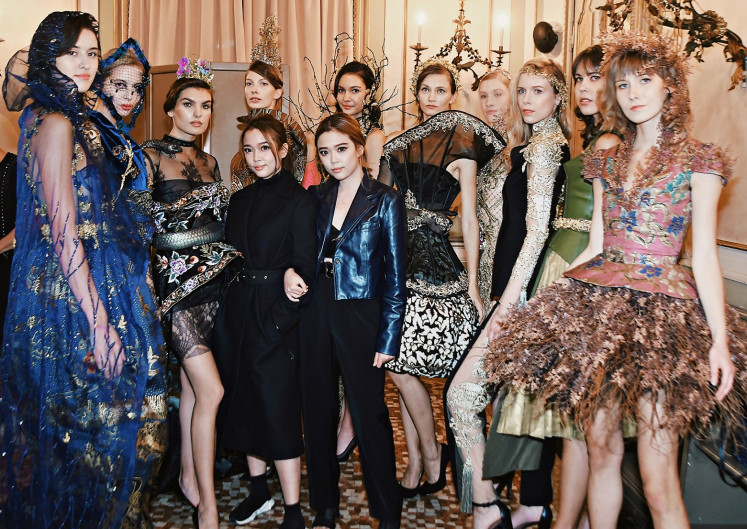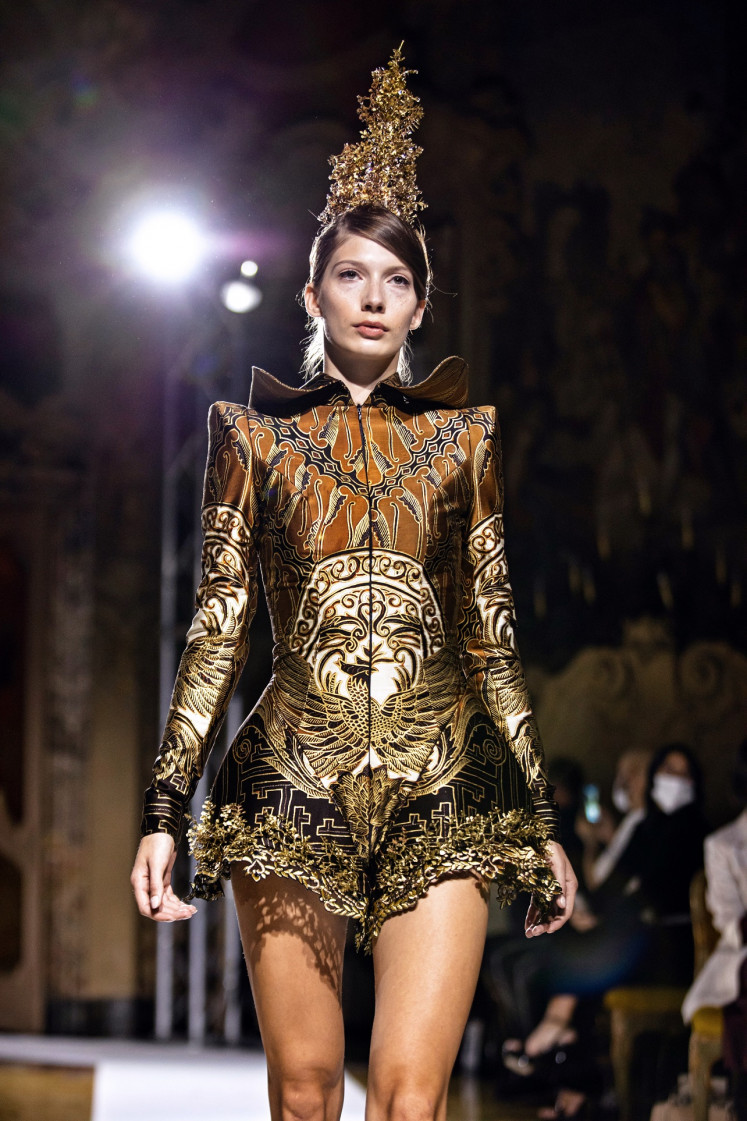Popular Reads
Top Results
Can't find what you're looking for?
View all search resultsPopular Reads
Top Results
Can't find what you're looking for?
View all search resultsA symbol of hope and perseverance on cloth
Like many events and celebrations this year, the annual Batik Day is likely to be overshadowed by the pandemic.
Change text size
Gift Premium Articles
to Anyone
Though the COVID-19 pandemic continues to pose challenges, batik artisans still stand true, come hell or high water.
Like many events and celebrations this year, the annual Batik Day is likely to be overshadowed by the pandemic.
In a time of crisis, it might sound silly to look for what some consider “non-essential”, as health and safety triumphs over anything else.
While there is a grain of truth there, any semblance of normalcy can be a brief respite in the face of overwhelming uncertainty.
Which is perhaps why the wax-resist dyed batik cloth, one of the symbols of Indonesia’s rich culture for the outside world, also symbolizes hope in these trying times. This is best exemplified in the Batik Garuda Nusantara cloth, finished just in time for the celebration.
Initiated by the Tjanting Batik Nusantara Foundation, the Batik Garuda Nusantara cloth was officiated by President Joko “Jokowi” Widodo and First Lady Iriana on Aug. 1, 2019, marking the 10th anniversary of UNESCO’s recognition of batik as an intangible cultural heritage.
As the occasion also marked Indonesia’s 74th year of independence, the batik cloth itself was designed to be 74 meters in length without any seams as well as dyed entirely using natural dyes.
Due to the double-sided nature of batik, the total length in the process was 148 meters. For context, the height of the National Monument is 132 meters.
Collective work: At 74 meters in length, the cloth took more than a year to complete, involving more than 90 artisans putting in a combined total of 216,000 man-hours of painstaking work. (Tjanting Batik Nusantara Foundation/-)On Sept. 25, the project was finally completed.
Involving more than 90 artisans putting in a total of 216,000 hours of labor, the Batik Garuda Nusantara is ready for public viewing on Batik Day, the commemoration of which will take place at the National Museum and to be streamed online.
Dubbed by the President himself, the Garuda Batik Nusantara received its name from the gurdo (garuda) pattern, the first motif to grace the cloth. Other traditional patterns are also present, like the parang, truntum, sido mukti and sekar jagad.
Pheo Hutabarat, the foundation’s head of supervisory board, said during a virtual press conference that the four patterns were considered after a lengthy research process with the Foreign Ministry, which decided on the patterns as part of “international batik diplomacy”.
“The Batik Garuda Nusantara was initiated as a reflection on post-independence batik, where the first wave can be said to begin when President Sukarno in 1955 requested batik maestro Go Tik Swan to create a batik for Indonesia. Our president thought that we must continue to develop – beyond varieties like batik from Solo or Lasem, but Indonesian batik,” he said.
The second wave, he continued, was in 2009 when UNESCO formally recognized batik as an intangible cultural heritage, along with then-president Susilo Bambang Yudhoyono’s decree that Oct. 2 would be designated as National Batik Day to honor the moment.
“If we look at it, batik is the only part of [Indonesian] culture formally celebrated with its own day of celebration. China’s Xinhua recently tried to claim batik as a traditional Chinese art, so we thought that there is a need to create an icon of masterpiece so that batik can be fully appreciated by the public as part of the nation’s branding.”
While the pandemic has created a difficult situation, the artisans were committed to finishing the batik cloth. The original plan to put the cloth on a world tour was also put on hold indefinitely.
Even so, batik still became an international star with the recent fashion show by Surabaya-based label Maquinn Couture on the stage of Milan Fashion Week.
Tradition meets trend: Surabaya-based label Maquinn Couture, the sole Indonesian representative at Milan Fashion Week Spring/Summer 2021, is built upon a love of batik passed down from generations. (Maquinn Couture/-)Having the honor of being the sole Indonesian representative for the Spring/Summer 2021 season, Maquinn Couture showcased intricate designs marrying Indonesian textiles with European styles on Saturday.
Titled Pilgrimage, the collection exudes classic femininity, with dramatic silhouettes punctuated by elaborate detailing worthy of Milan’s hallowed catwalks.
Towering: The Pilgrimage collection is meant to represent an acculturation between Indonesian textiles and European styles, highlighting batik Pekalongan and intricate detailing. (Maquinn Couture/-)Helmed by sisters Janice Pradipta Setyawan and Benita Pradipta Setiawan, Maquinn Couture was built upon a love of batik passed down from their mother.
In a virtual press conference before the show, Benita noted batik’s eminence in the international scene but said that the brand wanted the traditional textile to be worn even in other cultures seamlessly.
“We don’t want batik to be worn only for formal or ceremonial affairs but also to become one with its wearer to be worn on every occasion during the day. We want to show the versatility of batik, showing that batik can be really flexible,” she said.
For the Pilgrimage collection, the sisters looked at classical European styles like the leg of mutton sleeves and voluminous skirts, but also art.
Janice explained that one of the inspirations was from a 16th century painting by German painter Lucas Cranach the Elder, depicting the biblical figure Adam and Eve under a tree surrounded by animals.
“We used this painting as inspiration because this was a portrait of early life – diverse but harmonious. This is also one of our aims, to combine various cultures into one but without erasing their distinct personalities,” she said.
Maquinn Couture’s offerings feature intricate details painstakingly handmade, from the beadwork to the embroidery, but the batik remains its foundation.
Benita noted that the production of their batik pieces maintained traditional elements of the process, from the weaving of the silk to the writing of the patterns.
“Batik’s superiority lies not only within the patterns but also from its creation process,” she explained.
With the popularity of batik, she also highlighted the importance of the artisans, especially the sustainability aspect of the business.
“By continuously innovating like what we are doing, it will also affect the artisans – not only can they survive, they can also go up a grade, or so to speak, as they will be challenged to innovate as well.”
Your Opinion Matters
Share your experiences, suggestions, and any issues you've encountered on The Jakarta Post. We're here to listen.
Thank you
Thank you for sharing your thoughts. We appreciate your feedback.














